Future_Forecast
Ziyang Wu + Mark Ramos
Live Simulation + Collective World Building Online Game
2022
Game Development: Jiahui Zhao
NFT character design: Ziqi Wang, Kexin Mao, Hanxiao Ge
Future_Forecast is a project that includes a live simulation + collective world building game, a CGI film, and a series of characters. In the context of “Digital Earth”, “One Belt One Road Initiative” and the Philippines’ “Build Build Build Initiative”, Future_Forecast presents and predicts the evolution of cloud networked societies in the developing world by looking at the effects of growing Internet-enabled networks and the ecological, geopolitical, and socio-cultural effects of a speculative future ISP and blockchain company in the Philippines.
Project Context
The Philippines is No.1 globally on both the list of average daily time spent on the Internet (10 hours and 2 minutes) and social media (4 hours 5 minutes) every day. But it has the second slowest Internet speed in the world. In the context of the Philippine’s “Build Build Build” Initiative, a series of Internet infrastructure construction and blockchain applications are taking place: Dito Telecommunity, a telecom company backed by China Telecom, has officially entered the market this year (To break the current duopoly of PLDT and Globe in the Philippines); Alibaba announced in June this year that a new large data center will be built in the Philippines (providing Elastic Compute Service (ECS), database, global network solution, Content Delivery Network (CDN), and storage services); With the support of the Philippine government, Blockchain company CypherOdin, will use its blockchain and Internet of Things (IoT) technology to clean and repair the ecosystem of the Pasig River, which has been considered “ecologically dead” at the beginning of 2000s. Simultaneously , a series of problems are alerting us to the large amount of conflicts we are about to face: such as the large number of toxic gasses generated by the data center cooling system, ecological destruction, the prosperity of the dark web, panoramic surveillance accelerated by the Internet of Things, and so on.
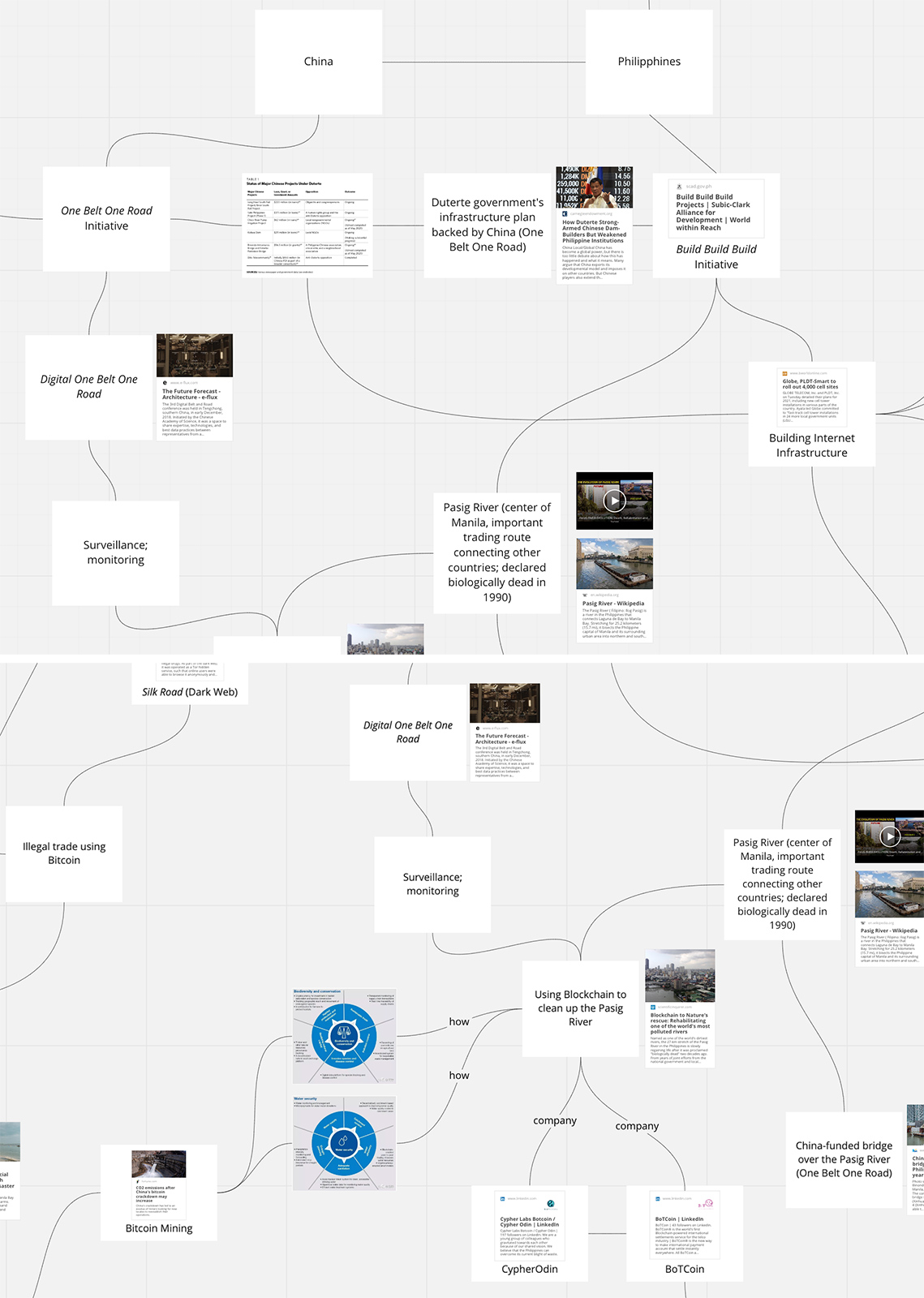
The project is heavily inspired by Benjamin Bratton’s The Stack – On Software and Sovereignty, which is an interdisciplinary design brief for a new geopolitics that works with and for planetary-scale computation. In The Stack, Bratton proposes that different genres of computation - from energy and mineral sourcing and subterranean cloud infrastructure and platform to smart cities, massive universal addressing systems, Internet of Things, algorithms, human and non-human users – can be seen not as so many species evolving on their own, but as forming a coherent whole: an accidental megastructure that is both a computational apparatus and a new governing architecture.
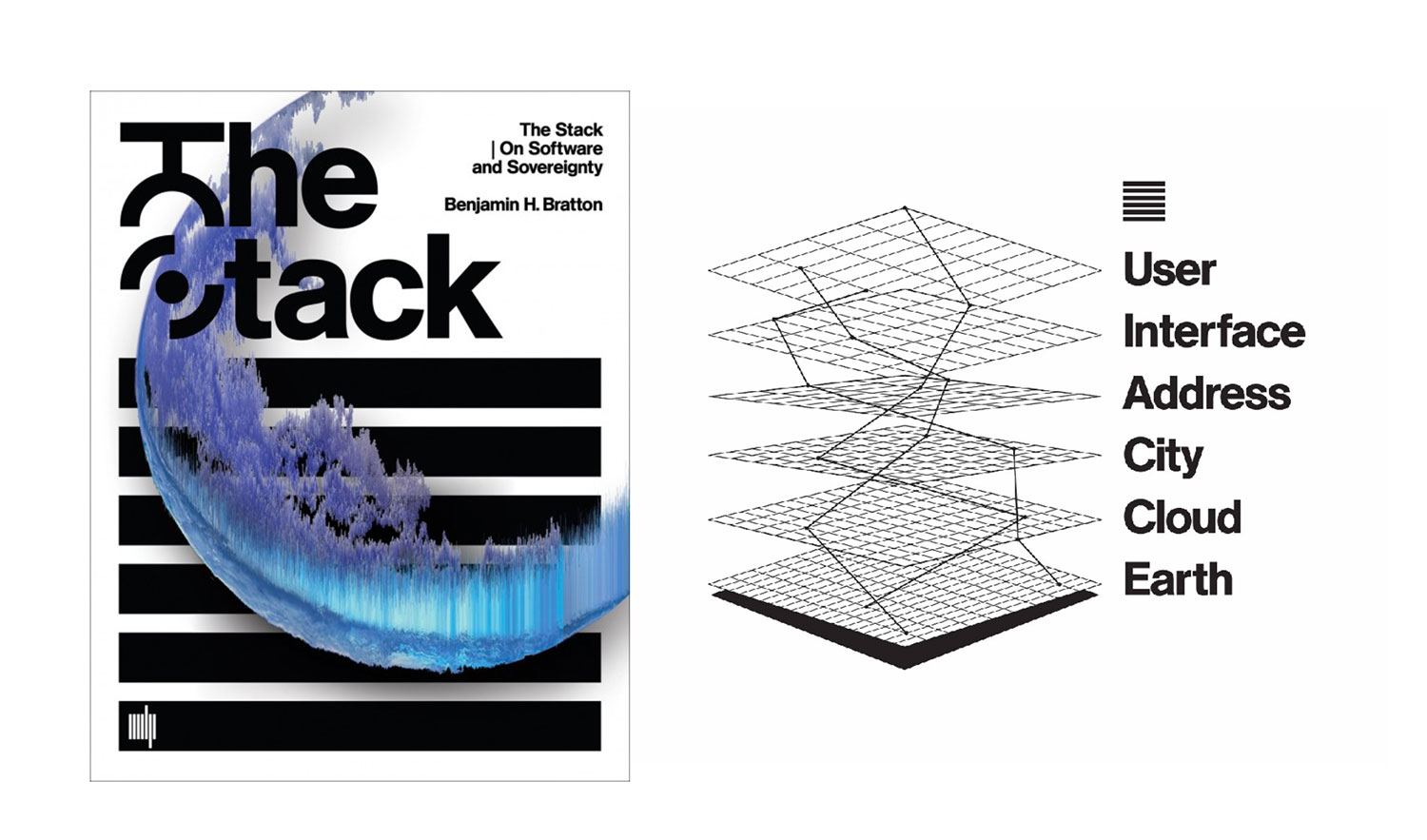
Based on Benjamin Bratton’s Stack theory, the project builds a 6-layer structure (earth, cloud, city, address, interface, user) as an interactive platformer on the Metaverse, and presents it in the form of real-time data simulation + collective world building.
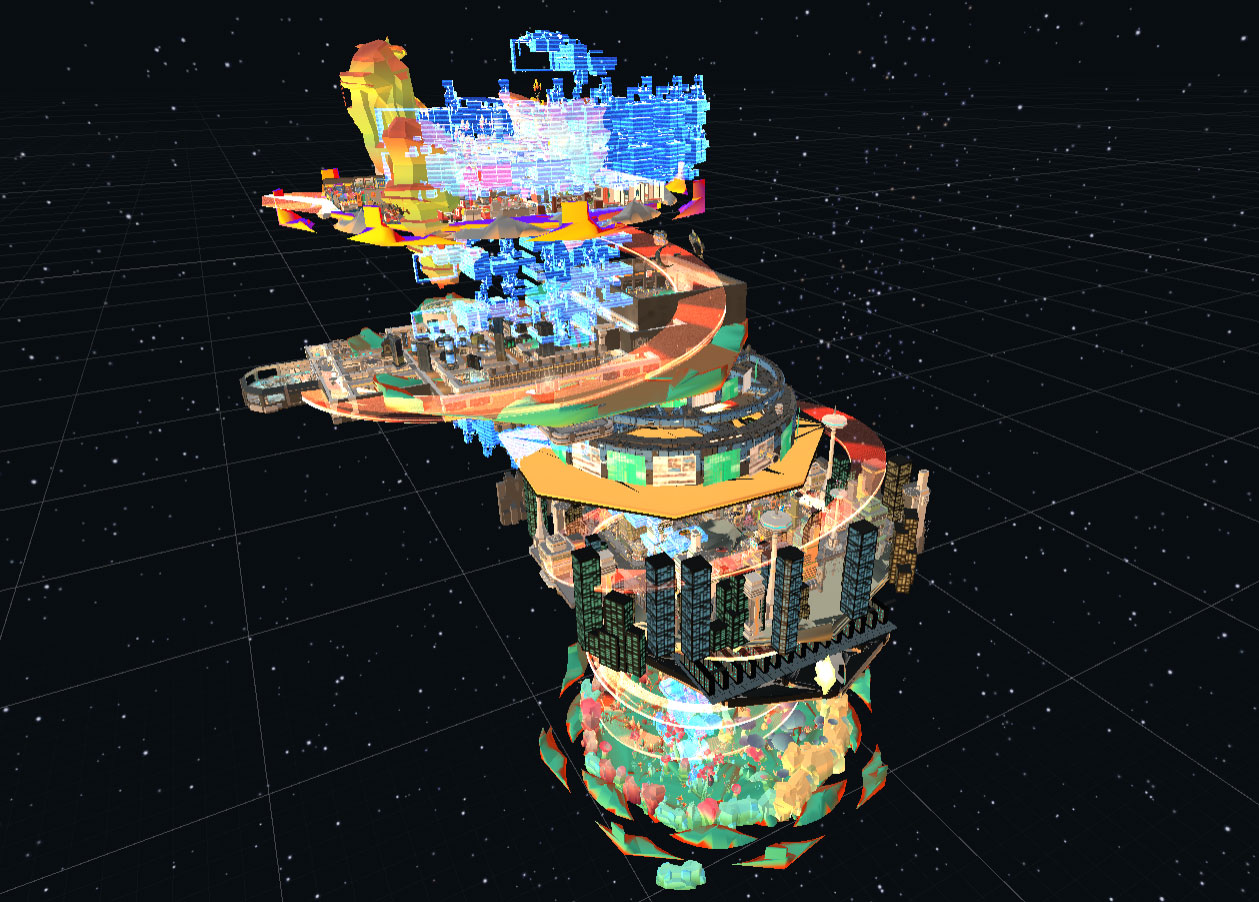
Live Simulation
A series of data related to climate and environmental changes in the Philippines (temperature, sea level, CO2, forest and agricultural land area, etc.), network infrastructure development (data centers, network speed, digital services, cloud services, etc.), and users (number of broadband and mobile network subscribers, time spent online per capita) are connected to the metaverse space through APIs to trigger the changes of temperature, sea level, CO2, number of network address, population, and other effects in real time.
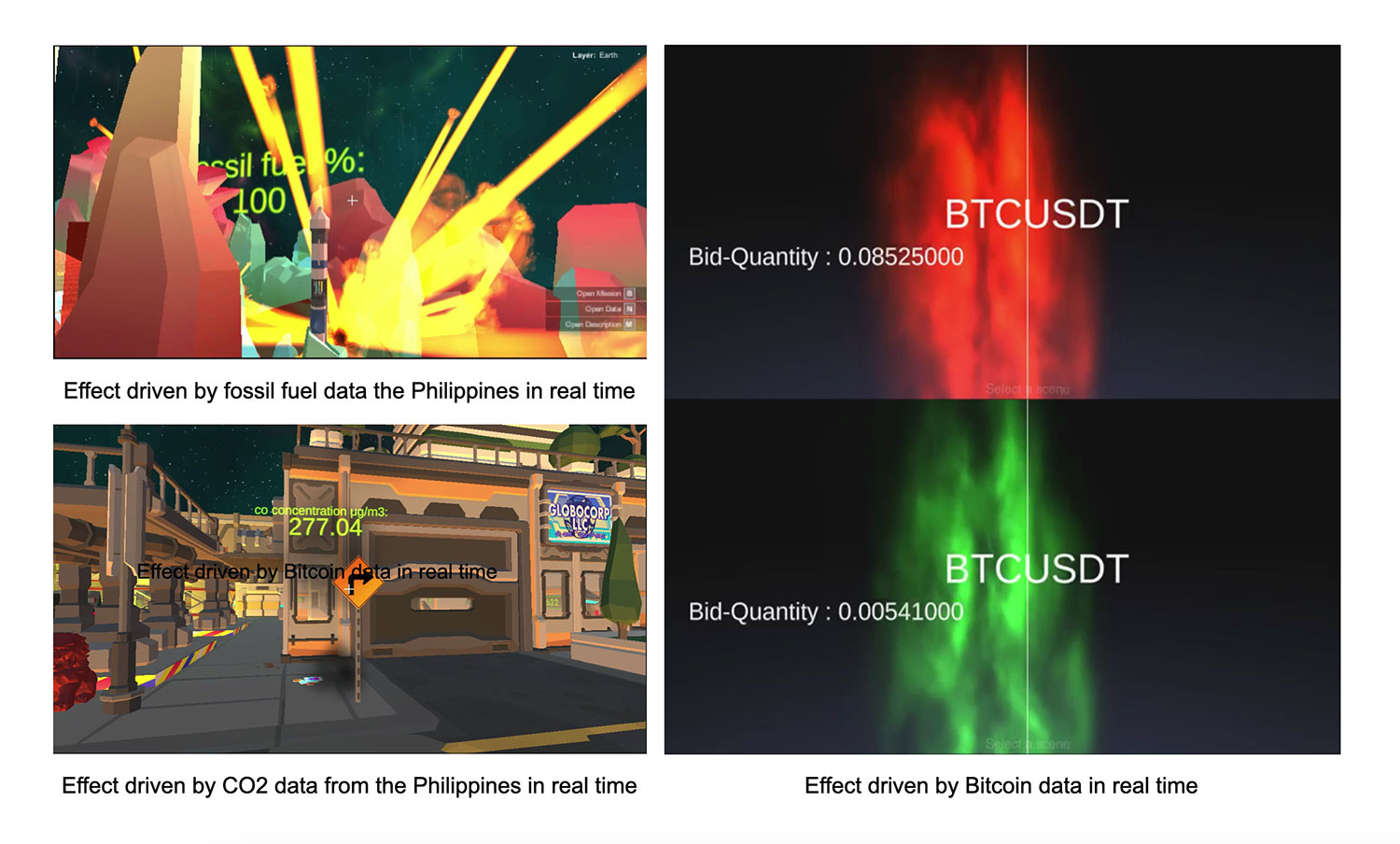
Collective World Building
By completing a series of tasks related to each layer based on preliminary research, players can "build" and permanently change the landscape of the project upon successful completion of the missions.
Mission 1
Plant a Tree, or Build an Alien “Tree-shaped” Signal Tower or “Mineral” Satellite Ground Station | Earth Layer
- Plant a tree: Helps absorb carbon dioxide, produce oxygen, and slow down global warming & rising sea levels
- Build an alien “tree-shaped” signal tower or “Mineral” satellite ground station: Pros -Contributes to the collection of vast amounts of information related to geology and human activity. Improving efficiency and achieving the goal of the "Digital Earth"; Cons - Accelerating the extraction of various natural resources and surveillance.
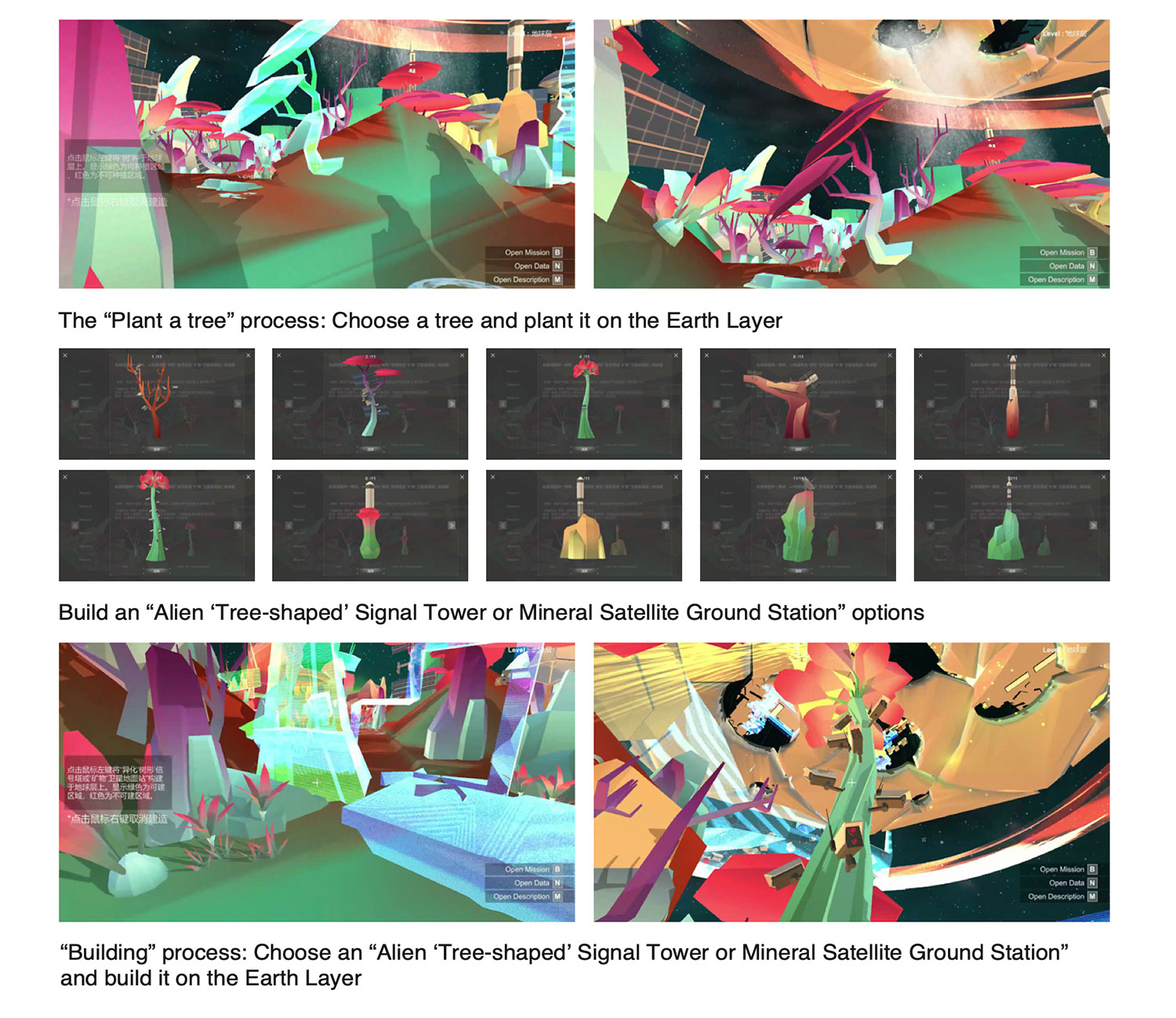
Mission 2
Crypto Company “Cypher Odin” Has Partnered with the Philippine Government to Utilize the Blockchain and Internet of Things (IoT) Technology to Clean the 27-Kilometer-Long Pasig River in Metro Manila | Earth Layer & City Layer
- Clean: The Pasig River becomes clearer. However, there will be more panoramic surveillance because it takes more implementation of IoT devices (More detectors and surveillance cameras) and blockchain technology for real-time detection and governance.
- Not clean: The Pasig River becomes cloudier and the pollution continues to increase.
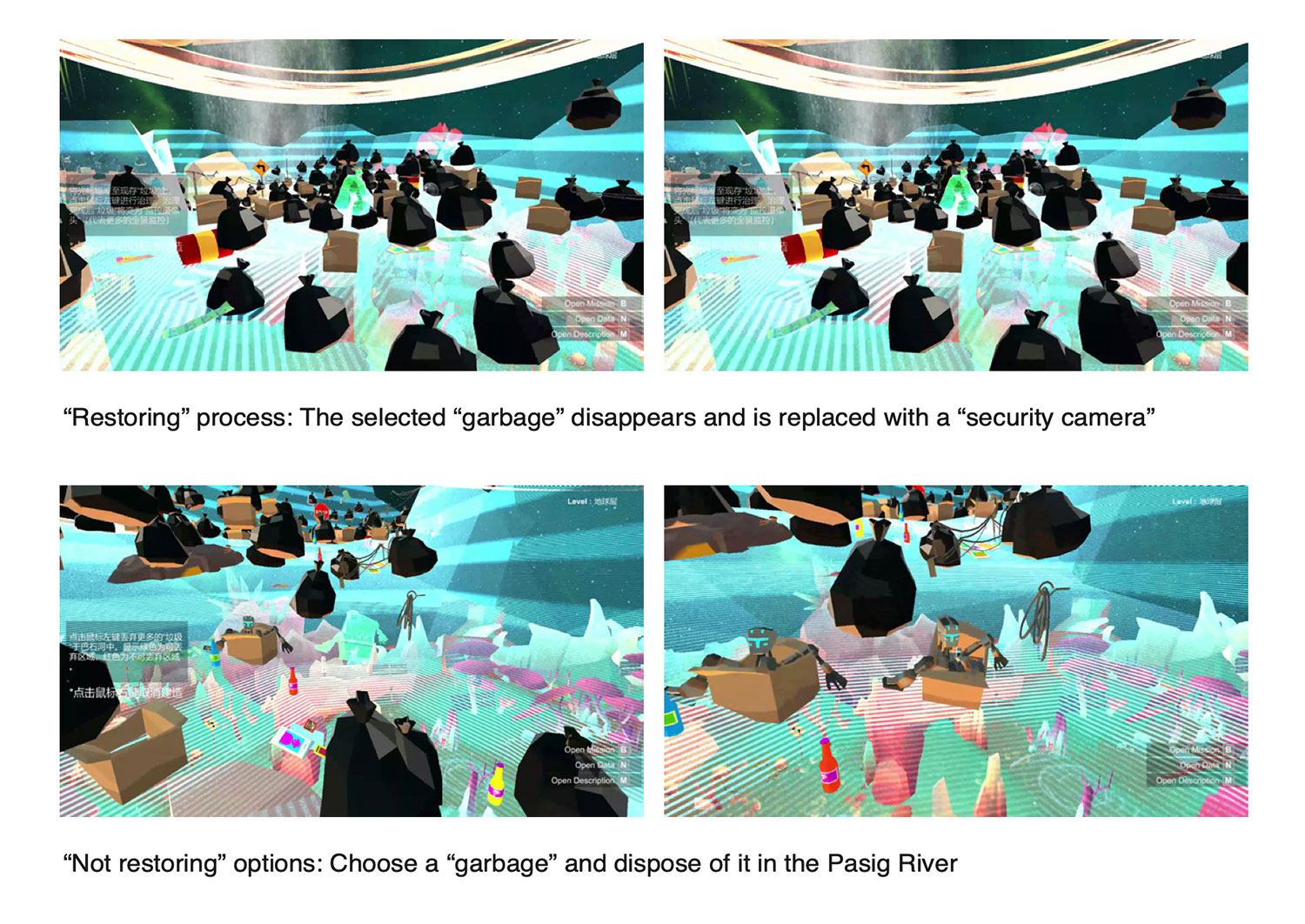
Mission 3
Cooperate with Large Foreign Telecommunications Companies to Install More Fiber Optic Cables to Accelerate the Development of Internet Infrastructure or Cooperate with Foreign Internet Companies to Build More Data Centers in the Philippines | Address Layer & Cloud Layer
- Install fiber optic cables: Pros - Internet speed increases and Internet charges decrease. It will increase the efficiency of work and study, which is very beneficial for the family who have to rely more on the Internet for work, and beneficial for the children who take online classes due to the impact of COVID-19. Cons - The domestic economy may face strong control by foreign companies and their countries.
- Build data center servers: Pros – Cloud & Data generate wealth, which is one of the most important sectors in the future development of the country; Cons – A. The power and cooling systems are extremely expensive and will produce a lot of CO2. B. Personal information may be utilized and manipulated. C. The export of digital capital from developed countries might result in a new type of political and economic control over developing countries, and form “neocolonization”.
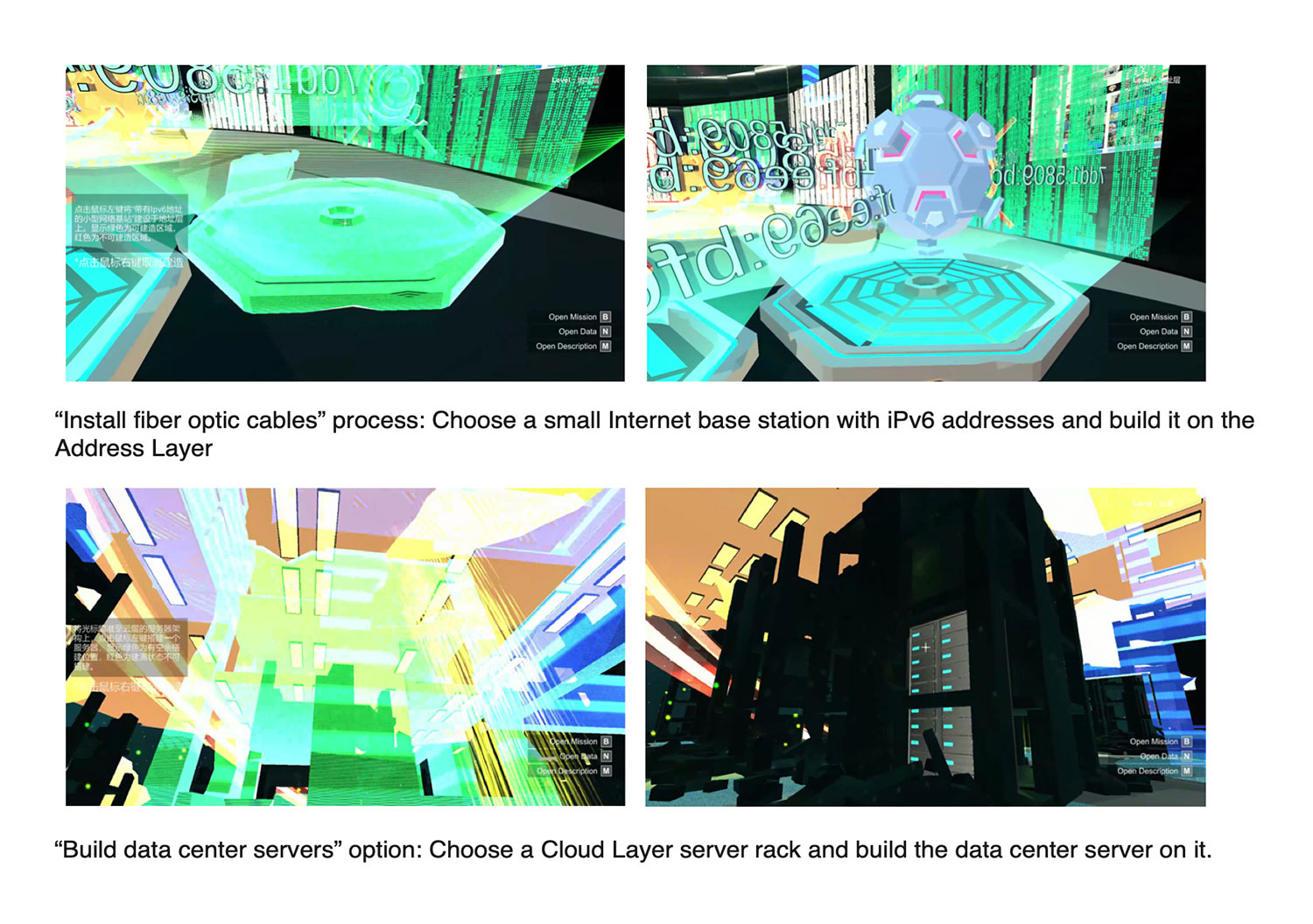
Mission 4
Build Sari-Sari Store (Typical Local Filipino Market) or Build Futuristic (Cyberpunk) Architectures | City Layer
- Build sari-sari local market: Pros – Low operating cost and provide affordable necessity items (often the owner buys in bulk and sells individual items). It also creates gathering places for local residents, which is very important in the self-circulation of the community. Cons – Facility is old, and is less efficient.
- Build futuristic (Cyberpunk) architectures: Pros – In line with the Philippines’ “Build Build Build” Initiative; promote economic and overall future urban construction and development; Cons – The urban planning and development will be more exposed to the risk of being controlled and programmed. The autonomy of communities will be reduced again.
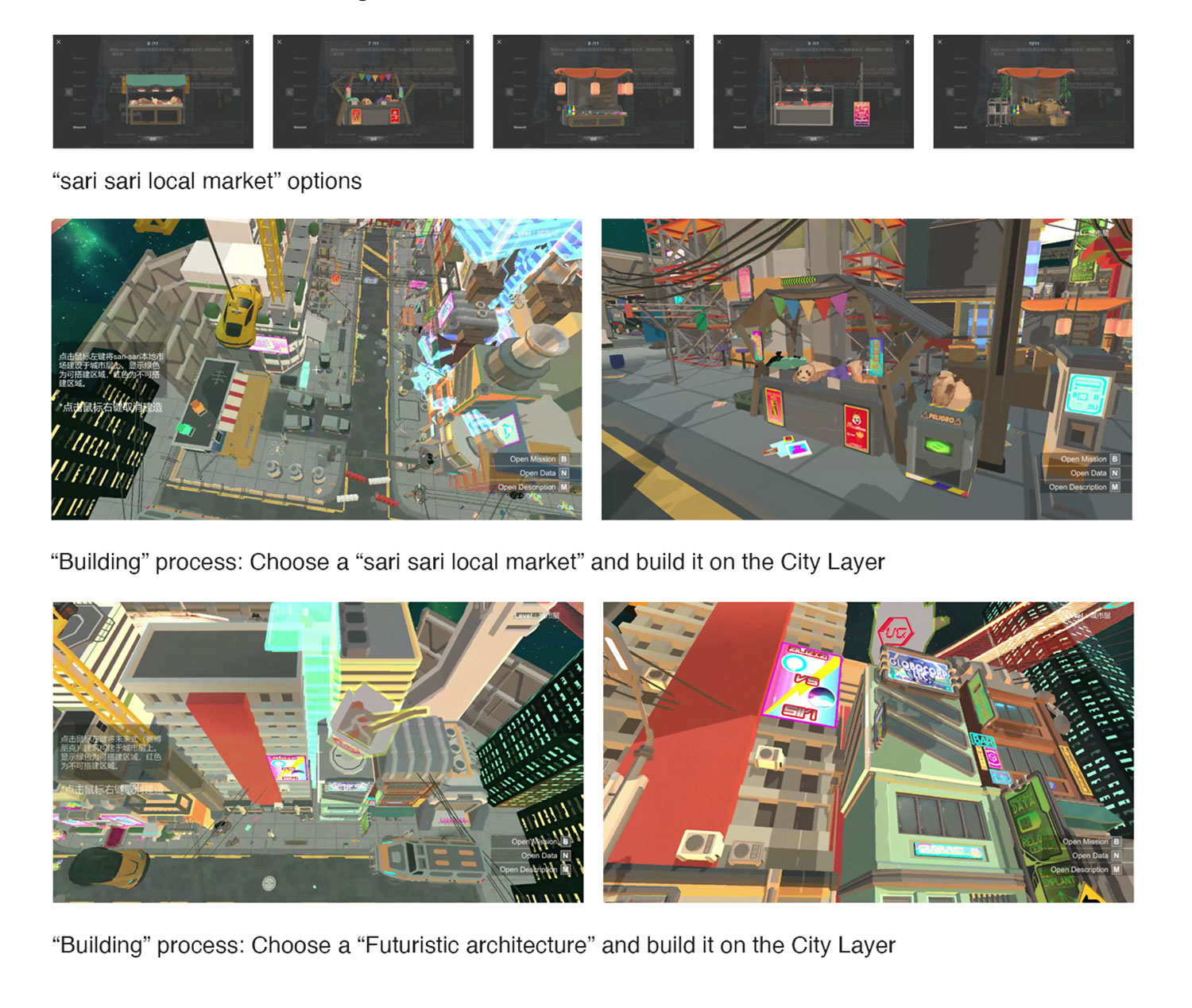
Mission 5
Dig More Mineral Materials to Manufacture More Traditional Interfaces (Mobile Phones, Tablets and Computers) or Manufacture More Advanced AR (Augmented Reality) and XR (Mixed Reality) Interfaces. (Note: Both Kinds of Interfaces Need to Excavate More Mineral Materials, Which Will Increase the Extraction of Resources in Developing Countries and Take Advantage of Their Cheap Labor) | Interface Layer
- Manufacture traditional interfaces (mobile phones, tablets and computers): More people will have cheaper mobile phones, tablets and computers, so that they will be able to play NFT games to make money and survive (Due to the impact of the pandemic, more than 150,000 unemployed Filipinos earn hundreds of dollars a month by playing the NFT game “Axie Infinity”)
- Manufacture more advanced AR (augmented reality) and XR (mixed reality) interfaces: Pros – More immersive and future interactive experience; Cons – The Philippines might evolve from “A country of Internet addiction” to “A country of super Internet addiction”. At the same time, the boundary between reality and virtual will be more blurred.
Mission 6
Hire Human Employees or Non-Human Employees | User Layer
Background: A. The Philippines is the capital of call centers in the world. This industry is very developed in the Philippines with a huge number of employees. B. The Philippine government offers “e-Residency” digital citizenship service. The digital citizen can work remotely in the Philippine government agencies and companies without living in the Philippines (even no need to ever appear in the country’s territory).
- Hire human employees: Multinational companies outsource their customer service job to local Philippine companies and employees, thus taking advantage of cheap labors; At the same time, it will also provide more job opportunities to local Filipinos.
- Hire non-human employees: Multinational companies purchase AI (artificial intelligence) customer service or "e-Residency" remote services. Its price is much higher than that of human employees and there are often wrong responses and services. But the overall operation is more simplified and efficient.
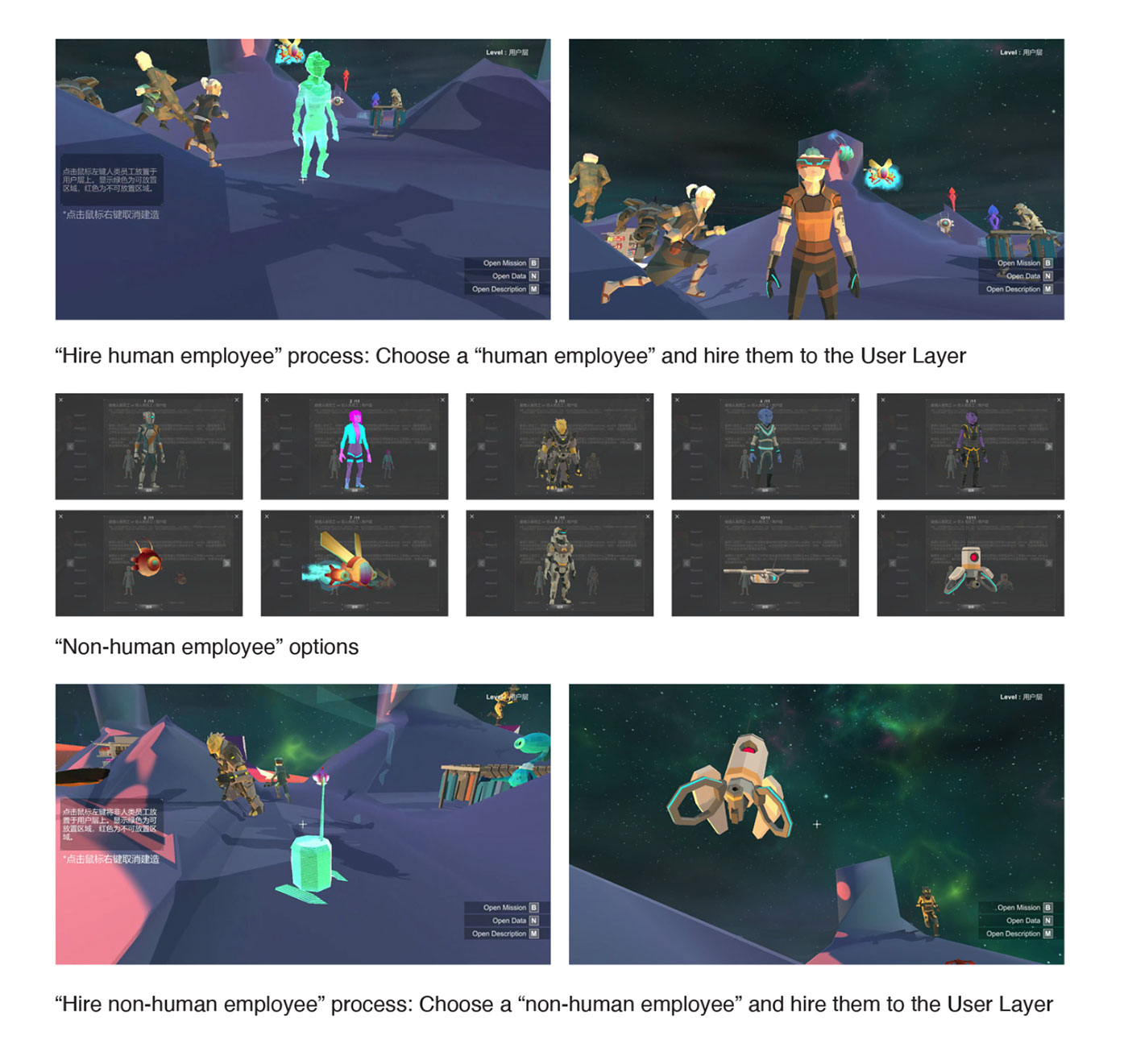
Focusing on a developing region (the Philippines), where the "superstack" platform has not yet been realized, as the object of research, we attempt to simulate a future between the virtual and the real, driven by both online and in-real-world data, and to explore the impact of network infrastructure construction and development on developing countries, in order to promote thinking about new infrastructure and discursive urban planning for sustainable development.
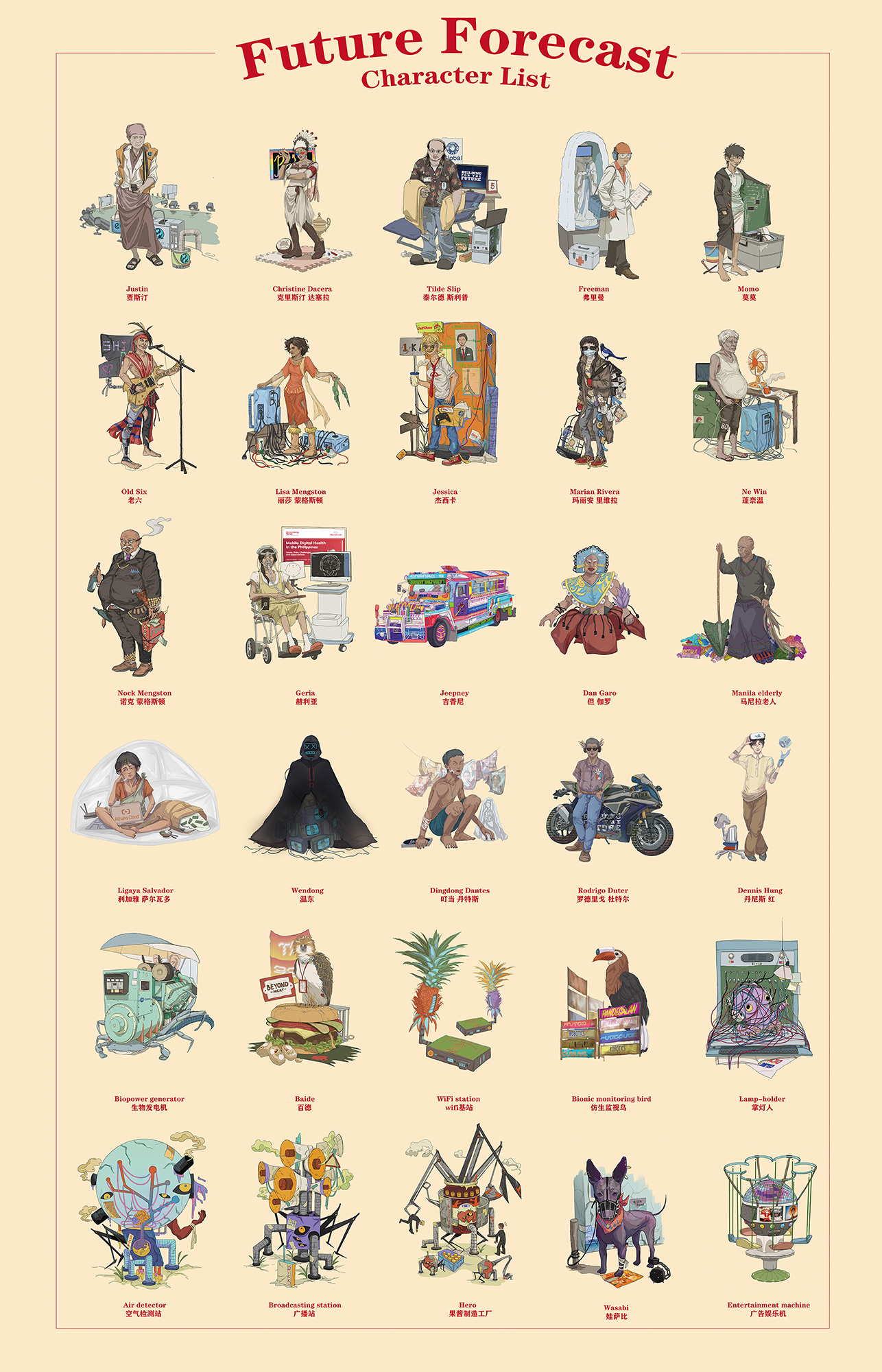
Mechanism
Step 1 - Buy NFT characters & items
Step 2 - Connect digital wallet in the metaverse game to verify the NFTs that have been purchased to exchange energy points.
Step 3 - Complete the “missions” in the game and build with energy points
Step 4 - Mint the “world” created by all players into an NFT and return all the income to the players who participated in the “collective world building”
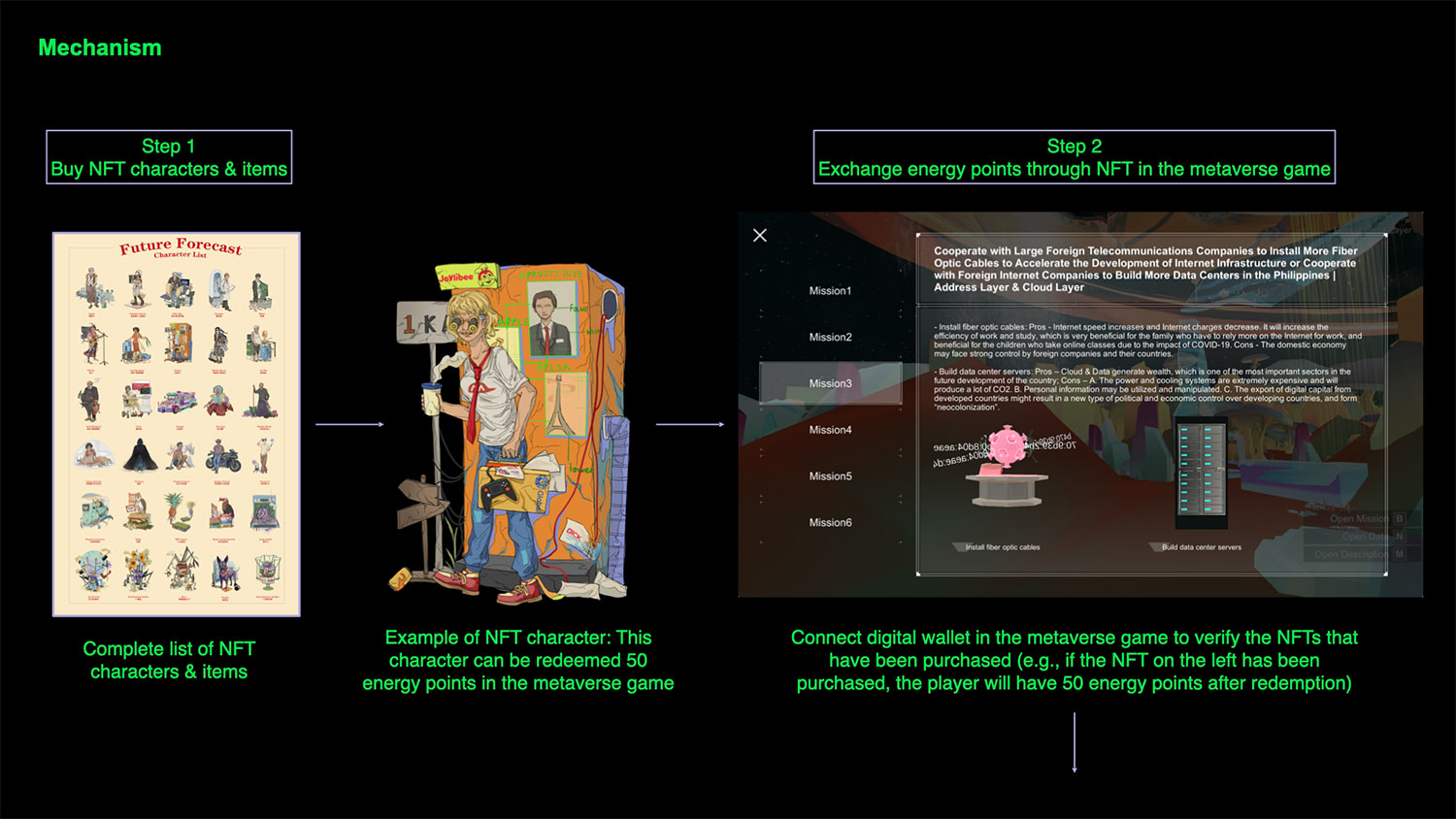
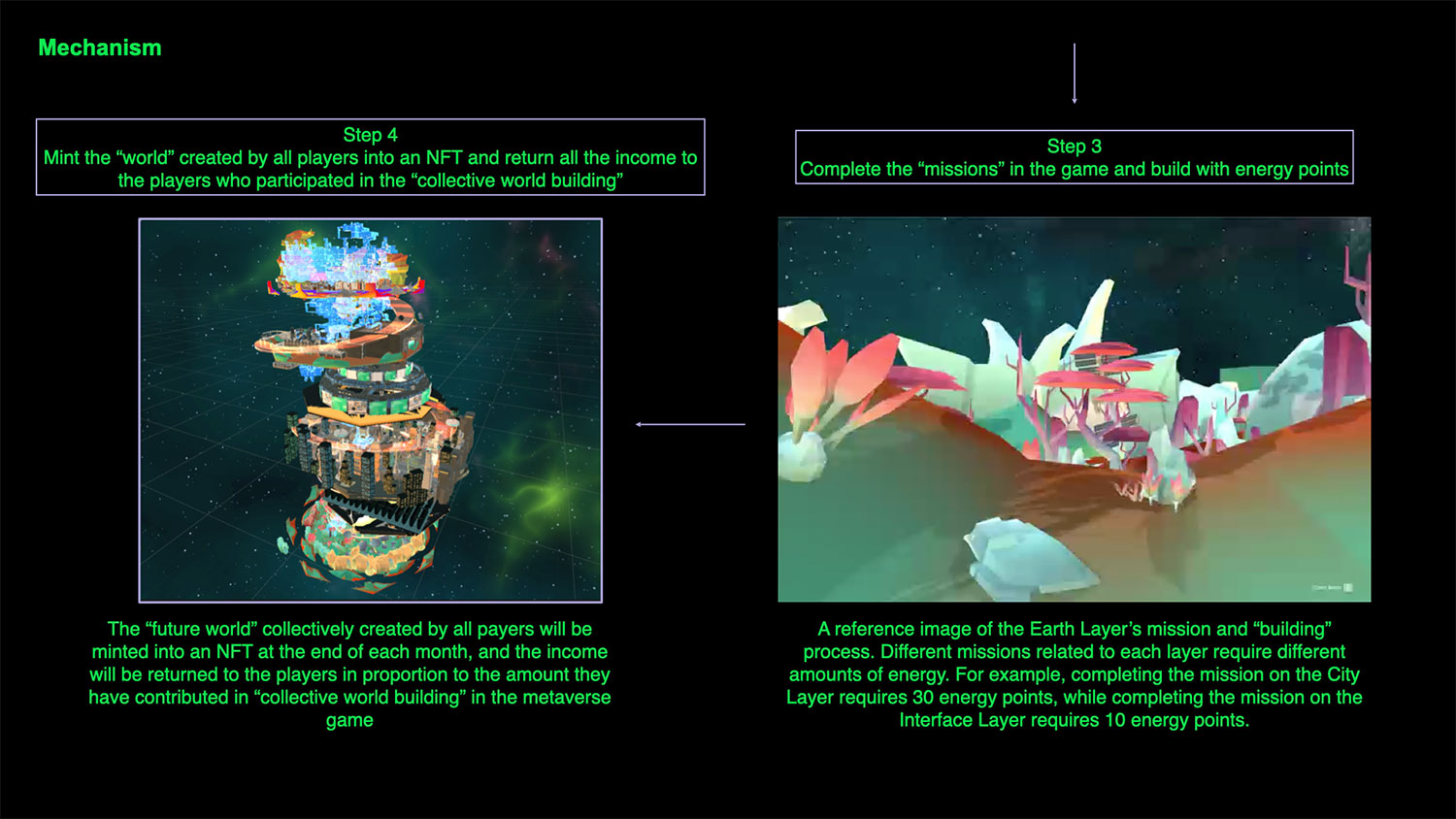
Link to the 100-page book of Future_Forecast -
Chinese version: https://pan.baidu.com/s/1AxUjMZ8ZZyfEKVhRsgNJVg Password:64tq
English version: https://drive.google.com/file/d/1zvkXYDuRxF013yvmK9_xP02vJwB-WMLs/view?usp=share_link











